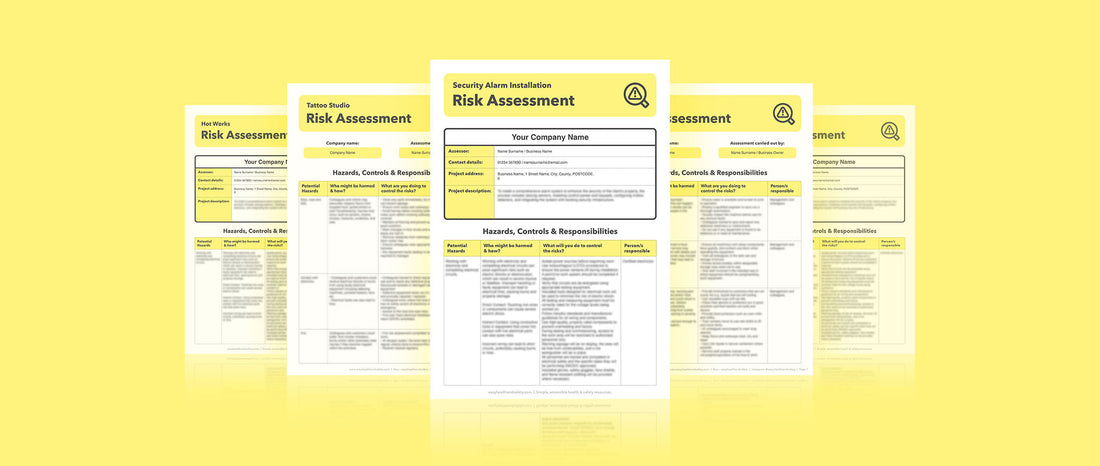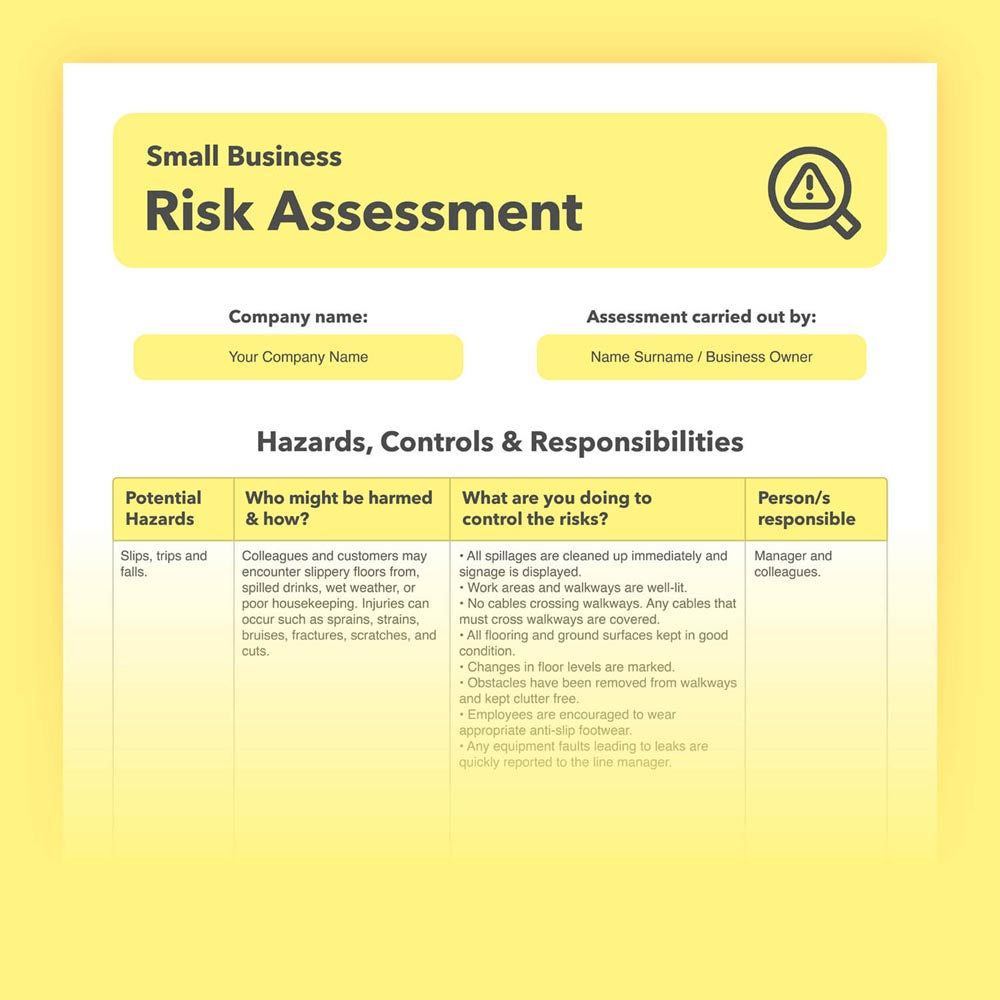
The Ultimate Guide to Conducting Effective Risk Assessments in the Workplace
Conducting effective risk assessments is crucial for ensuring a safe and compliant workplace. This ultimate guide packs in all the information you need in a concise format, without all the waffle and jargon. By following these steps and best practices, you can protect your employees and your business while staying compliant with health and safety regulations.
Understanding Risk Assessments
A risk assessment is a systematic process that involves identifying potential hazards in the workplace, evaluating the associated risks, and implementing measures to control or eliminate those risks. This process is essential for preventing workplace accidents and ensuring compliance with health and safety regulations

Steps to Conduct an Effective Risk Assessment
1. Identify the Hazards
The first step in any risk assessment is to identify potential hazards that could cause harm. This involves a thorough examination of your workplace and work activities. Look for physical, chemical, biological, ergonomic, and psychosocial hazards.
2. Determine Who Might Be Harmed and How
Once hazards are identified, consider who might be affected by these hazards and how. This includes employees, contractors, visitors, and even the public. Understanding the potential impact on different groups will help in developing effective control measures.
3. Evaluate the Risks and Decide on Precautions
Evaluate the likelihood and severity of each identified risk. Based on this evaluation, decide on appropriate precautions to eliminate or reduce the risks. Implement control measures following the hierarchy of controls: elimination, substitution, engineering controls, administrative controls, and personal protective equipment (PPE).
4. Record Your Findings and Implement Them
Document your risk assessment process, findings, and the measures you have implemented to control the risks. Ensure that these records are easily accessible and regularly updated. Implement the control measures and communicate them to all relevant parties.
5. Review and Update the Risk Assessment
Risk assessments should be dynamic documents that are reviewed and updated regularly, especially when there are changes in the workplace, such as new equipment, processes, or personnel. Regular reviews ensure that the risk assessments remain relevant and effective.

Best Practices for Effective Risk Assessments
Engage Employees
Involve employees in the risk assessment process. They can provide valuable insights into potential hazards and practical control measures. Employee involvement also fosters a safety culture within the organisation.
Use Technology
Leverage technology to streamline the risk assessment process. Tools like digital templates, mobile apps, and software can make it easier to conduct, document, and review risk assessments.
Training and Awareness
Ensure that all employees are trained on the importance of risk assessments and how to identify hazards. Regular training sessions and refresher courses can keep everyone informed and vigilant.
Enhance Your Risk Assessments with Our Templates
To simplify your risk assessment process, explore our range of digitally downloadable Risk Assessment Templates. These templates are pre-completed and fully editable, making it easier for you to customise them to fit your specific needs.
Why Choose Our Risk Assessment Templates?
- Time-Saving: Ready-to-use templates save you time and effort.
- Customisable: Editable PDFs that you can tailor to your business requirements.
- Comprehensive: Suitable for a range of small businesses and construction projects.
- Compliance: Ensure you meet all legal requirements effortlessly.
Visit our Risk Assessment Template collection today to download your templates and enhance the safety of your workplace.
By following this ultimate guide and utilising our professional templates, you can ensure that your risk assessments are effective, thorough, and compliant with health and safety regulations. This proactive approach to workplace safety will not only protect your employees but also contribute to the overall success and reputation of your business.

